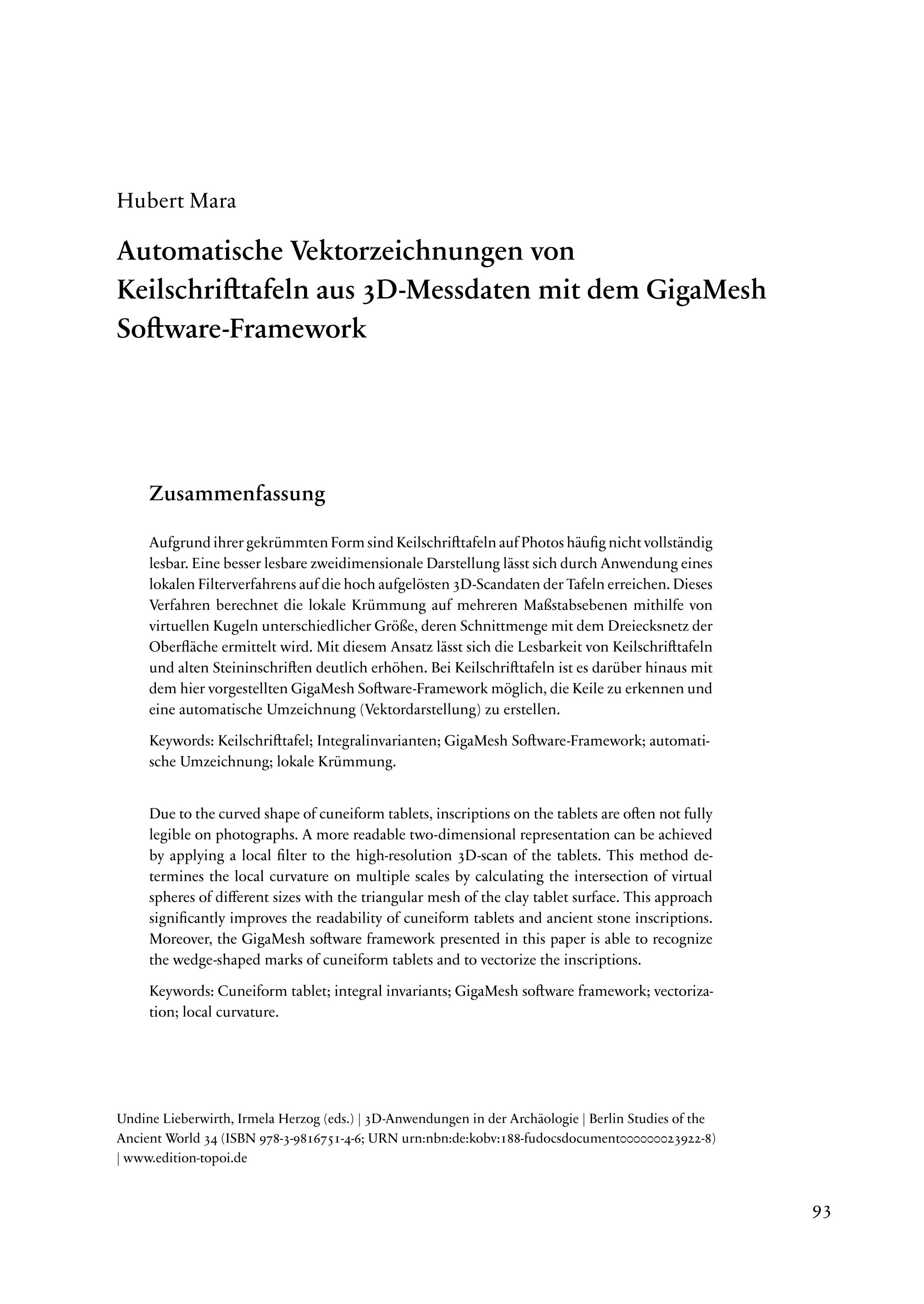Automatische Vektorzeichnungen von Keilschrifttafeln aus 3D-Messdaten mit dem GigaMesh Software-Framework
Due to the curved shape of cuneiform tablets, inscriptions on the tablets are often not fully legible on photographs. A more readable two-dimensional representation can be achieved by applying a local filter to the high-resolution 3D-scan of the tablets. This method determines the local curvature on multiple scales by calculating the intersection of virtual spheres of different sizes with the triangular mesh of the clay tablet surface. This approach significantly improves the readability of cuneiform tablets and ancient stone inscriptions. Moreover, the GigaMesh software framework presented in this paper is able to recognize the wedge-shaped marks of cuneiform tablets and to vectorize the inscriptions.
Aufgrund ihrer gekrümmten Form sind Keilschrifttafeln auf Photos häufig nicht vollständig lesbar. Eine besser lesbare zweidimensionale Darstellung lässt sich durch Anwendung eines lokalen Filterverfahrens auf die hoch aufgelösten 3D-Scandaten der Tafeln erreichen. Dieses Verfahren berechnet die lokale Krümmung auf mehreren Maßstabsebenen mithilfe von virtuellen Kugeln unterschiedlicher Größe, deren Schnittmenge mit dem Dreiecksnetz der Oberfläche ermittelt wird. Mit diesem Ansatz lässt sich die Lesbarkeit von Keilschrifttafeln und alten Steininschriften deutlich erhöhen. Bei Keilschrifttafeln ist es darüber hinaus mit dem hier vorgestellten GigaMesh Software-Framework möglich, die Keile zu erkennen und eine automatische Umzeichnung (Vektordarstellung) zu erstellen.

